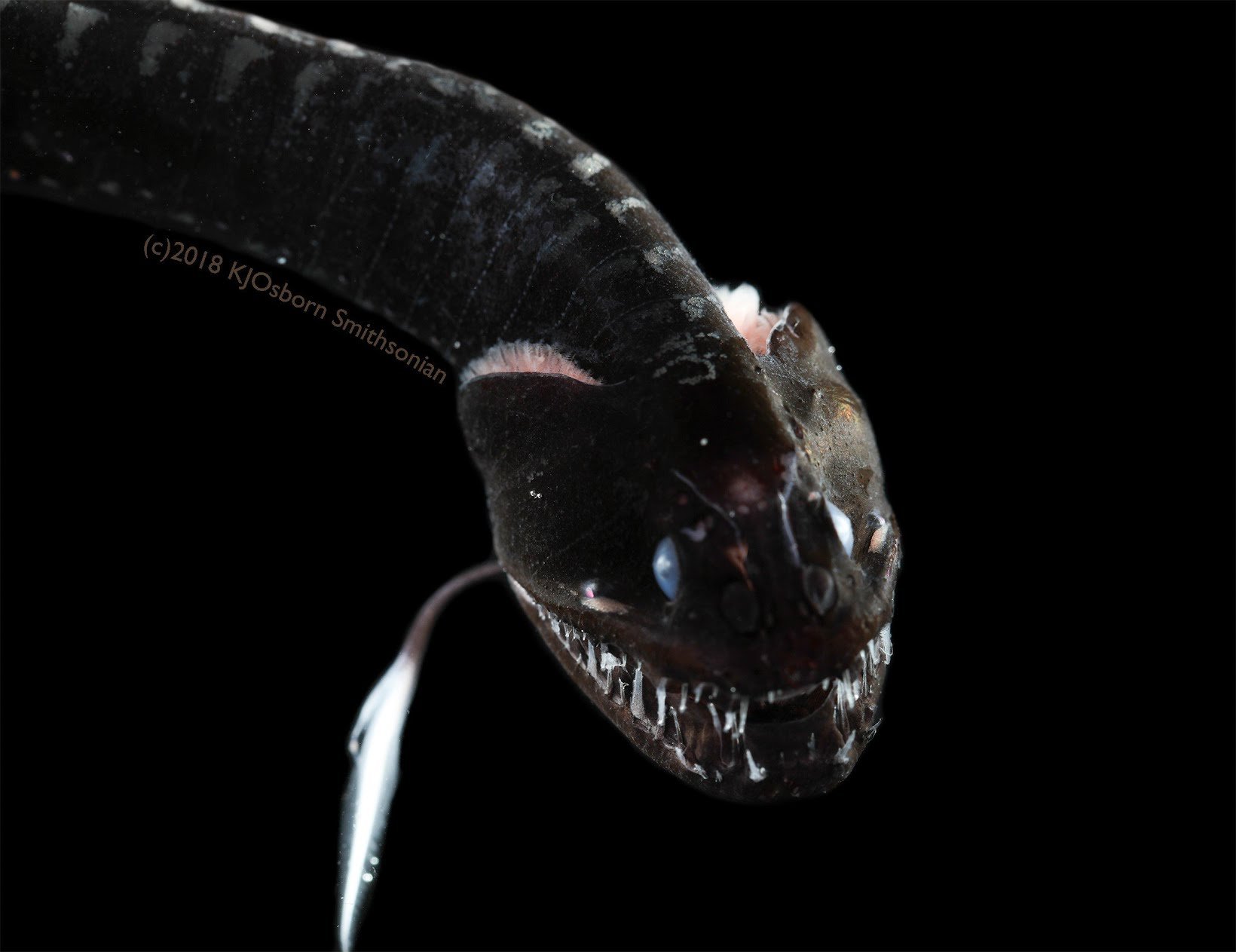When we think of a place several hundreds of meters down in the sea, the first thing that comes into our mind is the darkness. The sunlight can penetrate up to 200 meters into the ocean waters and after that its mostly darkness everywhere. Except for the light which comes from the organisms which are bioluminescent which exposes the other nearby organisms to the predators. Then here comes the Ultra Black Fishes which can absorb every single photon which reaches its surface.
In a new study published in Current Biology in July this year, researches talked about evolution that gave some of the deep sea fishes an ability to turn invisible. The study says about 16 varieties of these ultra black skinned fishes, which can easily camouflage into the deep sea waters.
Ultra black materials
Ultra black materials are those which reflect less than 0.5% of the light which reaches them. They are used in optical technology such as telescopes, infrared camera, and for camouflage.
“Most of these fish are a few inches to maybe the size of your hand,” says Karen Osborne, a zoologist at the Smithsonian National Museum of Natural History and one of the senior authors of the paper. When she tried to take photograph of one of these fishes she says, “It’s nearly impossible to get good photographs of these really black deep sea fish. They seem to suck up all the light no matter how you set up your flashes or camera settings”. These fishes can absorb 99.5% of light, even in the brightest places.

The reason!
The cause for this amazing camouflage ability is the pigment melanin. Melanin is the pigment present in the skin of humans and other mammals that can absorb light. Osborne and her colleagues say that this pigment is abundant in these fishes and more importantly, uniquely distributed and packed in melanosomes. Melanosomes are large organelles in the animal cells which is the site for synthesis, storage, and transport of melanin. These melanosomes are aligned in the pigment cells which in turn are distributed densely on the outermost dermis of these ultra black fishes. The melanosomes absorb the received light and if they fail to absorb the light immediately, they direct the light to neighboring melanosomes in the same cell. Credit goes to the shape, size and positioning of these melanosomes.
Other ultra black animals such as some birds of paradise and butterflies use more complicated method that absorbs some light and reflects the remaining between small vertical surfaces repeatedly until the light is totally absorbed to produce the ultra black cover. The method used by the ultra black fishes is much smaller and simpler when compared to that used by other ultra black animals.

Currently, Ultra black materials are manufactured using the method which matches to that used by birds of paradise and other animals. Researches explained that this trick provided by these fishes could help us to build ultra black materials which would be less expensive, more durable and flexible.
“Instead of building some kind of structure that traps the light, if you were to make the absorbing pigment the right size and shape, you could achieve the same absorption potentially a lot cheaper and [make the material] a lot less fragile,” says Osborn.
Journal Reference:
Alexander L. Davis, Kate N. Thomas, Freya E. Goetz, Bruce H. Robison, Sönke Johnsen, Karen J. Osborn. Ultra-black Camouflage in Deep-Sea Fishes. Current Biology, 2020; DOI: 10.1016/j.cub.2020.06.044

